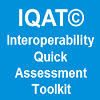Recommendation 27 | Interoperability layer: Legal interoperability
Ensure that legislation is screened by means of ‘interoperability checks’, to identify any barriers to interoperability. When drafting legislation to establish a European public service, seek to make it consistent with relevant legislation, perform a ‘digital check’ and consider data protection requirements.
Solutions
| List of all available solutions that implement this recommendation |
|---|

|
CAMSS tools can be viewed as supporting public officials in performing 'digital checks' on new legislation. |

|
CAMSSaaS can support policy makers to take decisions on the selection of standards and specifications when defining legislations and implementation acts. |

|
CarTool supports its users in the assessment of ICT implications in new legislation by to assess ICT by allowing them to search related solutions in the solutions’ Cartography. |

Location Framework Blueprint
|
EULF Blueprint Recommendation 1 in the Policy and Strategy Alignment focus area includes a recommendation on using a consistent approach to location information in different policy areas and references the 'Interoperability Checks' specified in the EIF. |

|
The use of a common technical specifications helps to ensure consistency and interoperability between different legislations. |

|
The IQAT assesses to which extent coherence with relevant legislation has been evaluated when designing a solution. |

|
The use of the EUPL license during the drafting process of the legislation, helps to make it consistent with other legislations using the license. |

|
The guidelines provide concrete steps on how assessment of ICT implications of new legislation should be performed. Interoperability considerations form a core part of this assessment. Whilst the solution is strongly focused on EC, Member States can use the guidelines as something to potentially be adapted and reused and national level. |

LIMAPS v1.0.0 |
LIMAPS assesses the behavioural aspects of a digital public service, from the legal interoperability viewpoint. Question D4 of the Service Delivery section of the LIMAPS questionnaire assesses whether there are any legal requirements that affect the public service delivery to its end users and how they are handled. Furthermore, question C4 of the Service Consumption section of the LIMAPS questionnaire assesses how any contradictions in the legal mandates of the client services, that limit their consumption by the public service, are resolved. |



